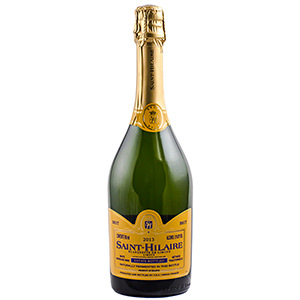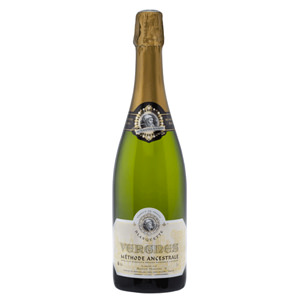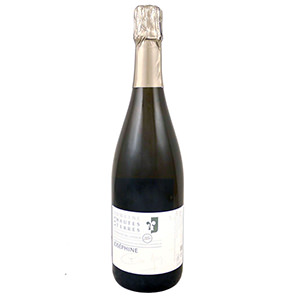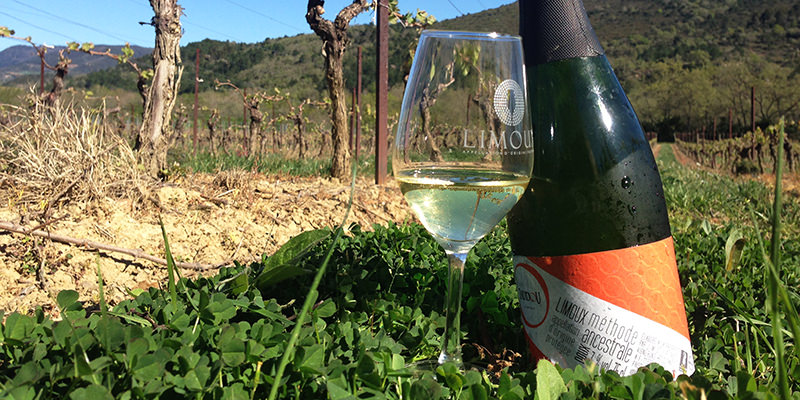The story goes: about 300 years back, there was a monk named Dom Pérignon, who invented the winemaking process that we now call the “Champagne method.” In other words, he figured out that it was possible to create bubbles through a secondary fermentation in the bottle, and that this was actually desirable. For a long time, bubbles were considered a flaw in wine, partly because the bottles exploded until people figured out how to make the glass thicker. (That’s why Champagne bottles are so heavy!)
But in the South of France, in the Languedoc, there’s another version to this origin story: that this monk Dom Pérignon passed through their area, learned about their sparkling wines—which they were making before Champagne—and then brought the method up north to establish the method there.
Neither of those stories seem entirely true, it turns out. “In Limoux, in the 16th century, we have documentation of sparkling wine—and it’s one century before Champagne,” says Jerome Villaret, a Limoux appellation representative. He laughs when I ask about the Dom Pérignon crib story. “We don’t know if Dom Pérignon came here before going to Champagne. But we do know that we were making sparkling wine here, and then Champagne began using the same method.”
Regardless, sparkling wines from Limoux are worth knowing about. They make a few different styles; all are delicious and way cheaper than Champagne. Most of the bubbles coming out of Limoux are a blend of Chardonnay, Pinot Noir, and Mauzac (a grape that’s native to the region). If you’ve never known the difference between Crémant and Champagne, the answer is: they are both made the same way, but Champagne is a specific appellation where land prices are higher and so the wine costs more.
The vineyards of Limoux are planted in clay and limestone soil, and they are full of bees and wildflowers, lending honeyed notes to the wines. They get a ton of the Southern French sunshine that’s perfect for ripening grapes—plus, the Languedoc is a very windy region, which preserves the acidity. In other words, Limoux sparkling wines are elegant, delicious, made in more or less the same process as Champagne, and way kinder on your wallet. So, whether a monk stole the techniques and brought them up north, as the story goes, or not, the fact of the matter is: You need to get to know these tasty wines.
Here are the different styles of sparkling Limoux wine:
Blanquette de Limoux
 This will be at least 90 percent Mauzac, with the potential addition of Chardonnay and Chenin Blanc, and it contains just a bit of residual sugar, meaning it’s not totally dry. The leftover residual sugar also means that the wine is lower in alcohol. Tasting notes include fresh green apples, and strong floral overtones. Refreshing and lightly sweet, this would be a great aperitif wine, or served at the end of a meal with dessert or salty blue cheese.
This will be at least 90 percent Mauzac, with the potential addition of Chardonnay and Chenin Blanc, and it contains just a bit of residual sugar, meaning it’s not totally dry. The leftover residual sugar also means that the wine is lower in alcohol. Tasting notes include fresh green apples, and strong floral overtones. Refreshing and lightly sweet, this would be a great aperitif wine, or served at the end of a meal with dessert or salty blue cheese.
Try: Saint-Hilaire Blanquette de Limoux, $11
Blanquette Méthode Ancestrale
 It’s the OG of Champagne—this is the wine invented by Southern French monks in the early 16th century. (Methode Ancestrale is French for “how they made sparkling wine waaaay back in the day like four centuries ago.) This will be 100 percent Mauzac, and a tiny bit sweet from residual sugar. The wine is a bit cloudy because it is left to ferment in the bottle, and the accumulated sediment is not disgorged. This is a very tasty wine that cider drinkers will love, and which could be an aperitif or paired with vegetable-focused dishes like risotto or pizza, or cheese plates.
It’s the OG of Champagne—this is the wine invented by Southern French monks in the early 16th century. (Methode Ancestrale is French for “how they made sparkling wine waaaay back in the day like four centuries ago.) This will be 100 percent Mauzac, and a tiny bit sweet from residual sugar. The wine is a bit cloudy because it is left to ferment in the bottle, and the accumulated sediment is not disgorged. This is a very tasty wine that cider drinkers will love, and which could be an aperitif or paired with vegetable-focused dishes like risotto or pizza, or cheese plates.
Try: Vergnes Domaine de Martinolle Blanquette de Limoux Méthode Ancestrale, $15
Crémant de Limoux
 Out of these three Limoux wines, this is the style you’re most likely to find Stateside, and probably your best pick if you’re after a refreshing, bright sparkler to go with food or a cheese and meat plate. The Crémant can be a blend of Chardonnay, Chenin Blanc, Mauzac, and Pinot Noir. Although a small amount of added sugar known as liquer de tirage is added to augment the fermentation process, this wine is virtually dry.
Out of these three Limoux wines, this is the style you’re most likely to find Stateside, and probably your best pick if you’re after a refreshing, bright sparkler to go with food or a cheese and meat plate. The Crémant can be a blend of Chardonnay, Chenin Blanc, Mauzac, and Pinot Noir. Although a small amount of added sugar known as liquer de tirage is added to augment the fermentation process, this wine is virtually dry.
Try: Domaine les Hautes Terres, Crémant de Limoux, $20

